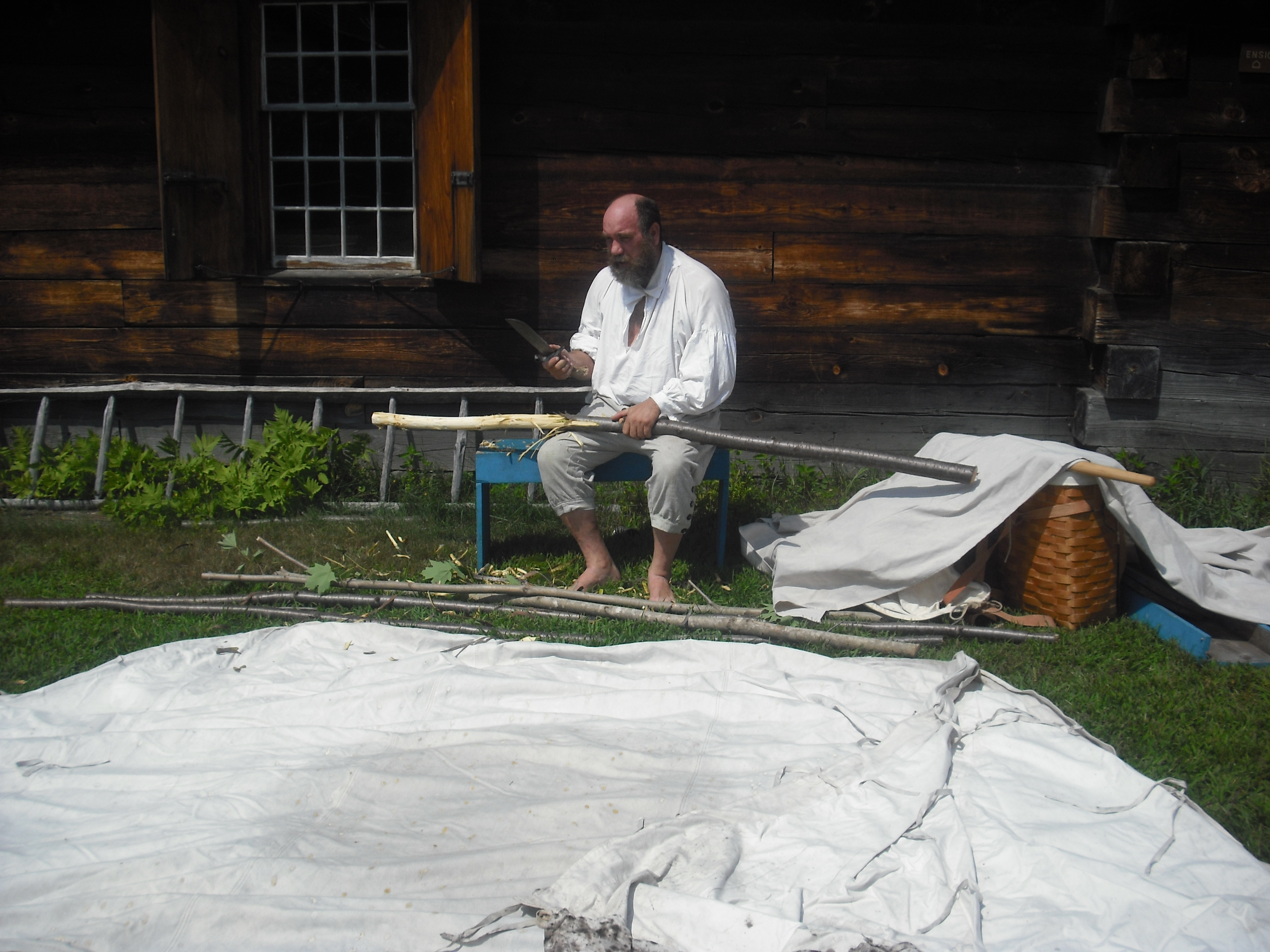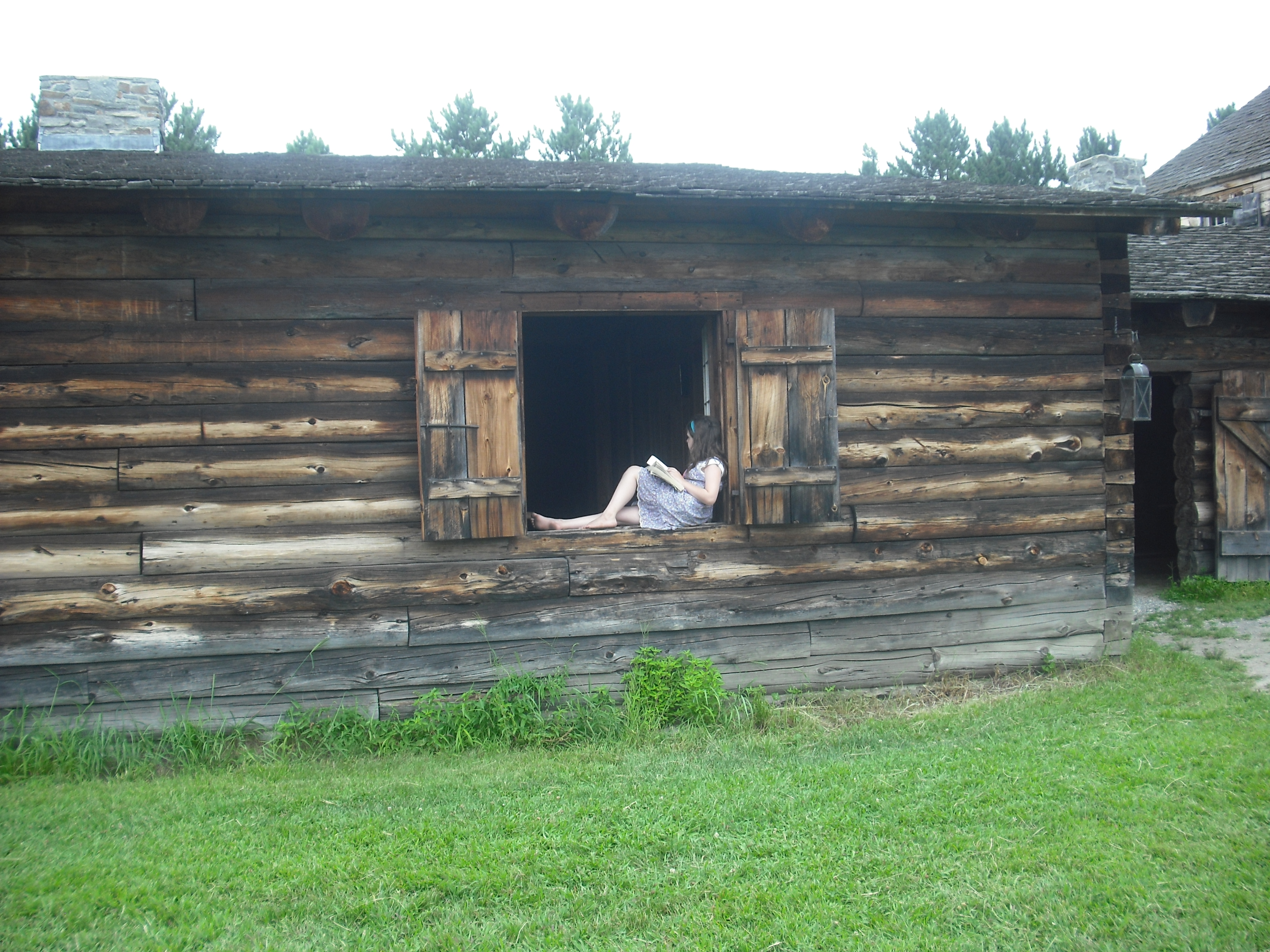Your cart is currently empty!
Time Travelers

My father and I went to the 1750s this weekend, getting away from the hurry and scurry of the twenty-first centry for a time. He does this several times a year, I much more rarely. We traveled to Charlestown, NH, where the living history museum called the Fort at No. 4 is located. It was there during the French and Indian war, when we were still British subjects, not yet American.

The day was hot and sunny, but we needed to make new poles for the tent, so we brought along several saplings from our farm, and after cutting them to length we peeled them. Sitting in the sun for the time it took to do this led to sunburns for both of us. Peeling the poles keeps bugs from hiding under the bark and eating the wood, shortening the life of the poles. They will eventually become too dry and brittle to use, and we will repeat this process, but Dad’s last set of poles lasted six years.

The small wedge tent Dad uses only takes three poles, two uprights and a ridge pole, to use for sleeping in. The guy lines hold it up and in the desired shape. Today we were using it for shade, so two more poles lift up one side of the tent into an awning. You can see Dad’s project for the day, the other blue bench that had broken. We weren’t spending the night, so various baskets hold lunch and tools.


Flax and wool were the most common fabrics here in New Hampshire. Cotton would have been rare and very expensive, as flax and sheep can be grown quite well here, but not cotton. Flax making was a long, intensive process involving collection of the raw material, leaving the stalks soak in water until the outeer layer rotted away, and then chopping the stalks with a wooden device that resembles a manual paper cutter without a blade. The strands of fiber were then combed and bleached to make the hank she is holding. Finally, the flax would have been spun into fine thread, dyed, and woven on a loom that would take up most people’s living room.

The only big windows opened into the center area, as the Fort was used in a time of War. Outer walls have small heavily shuttered windows and gunslits. Around the Fort buildings, inside the palisade, are the gardens.

Dad’s nickname is “Beekeeper” because he keeps bees, and because he makes candles. It was too hot to dip candles, at high temperatures the wax just remelts the previous layer and all runs off the wick. We dip in the spring and fall. Most of these went into the shop on consignment at the Fort, but a few pairs we sold and bartered with.


